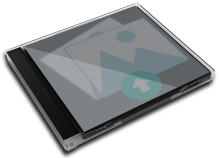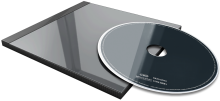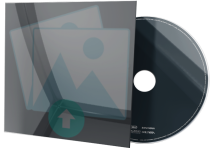Cover NOT yet available in
Join Patreon for 4K upload/download access
Your Rating (Click a star below)
![]()
![]()
![]()
![]()
![]()
![]()
![]()
![]()
![]()
![]()
Track List
01) When the Morning Comes
02) Had I Known You Better Then
03) Las Vegas Turnaround (The Stewardess Song)
04) She's Gone
05) I'm Just a Kid (Don't Make Me Feel Like a Ma
06) Abandoned Luncheonette
07) Lady Rain
08) Laughing Boy
09) Everytime I Look at You
01) When the Morning Comes
02) Had I Known You Better Then
03) Las Vegas Turnaround (The Stewardess Song)
04) She's Gone
05) I'm Just a Kid (Don't Make Me Feel Like a Ma
06) Abandoned Luncheonette
07) Lady Rain
08) Laughing Boy
09) Everytime I Look at You
3:16
3:27
3:01
5:17
3:22
4:00
4:27
3:34
7:02
Data Complete
 70%
70%
Total Rating
 70%
70%Total Rating
![]() (0 users)
(0 users)
Back Cover![]()
CD Art
3D Case
3D Thumb
3D Flat
3D Face
3D Spine
First Released
![]() 1973
1973
![]() Pop
Pop
![]() Good Natured
Good Natured
![]() Rock/Pop
Rock/Pop
![]() ---
---
![]() Medium
Medium
![]() Album
Album
![]() 0 copies
0 copies
Album Description
Available in:
Abandoned Luncheonette is the second studio album by the American pop rock duo Hall & Oates, released in 1973, which combines folk, Philly soul, and acoustic soul. It is the most commercially successful of their Atlantic Records period; the album reached #33 on the Billboard Top LPs & Tapes chart. Twenty-nine years after its release, the album was certified platinum (over one million copies sold) by the Recording Industry Association of America.
After their first album, Whole Oats, failed to make an impact, the duo moved from Philadelphia to New York and started recording Abandoned Luncheonette, which became the first album they recorded as New Yorkers. Their producer was still Arif Mardin but they wanted to get away from the commercial standards to establish the parameters of their musical identity, and Mardin helped in that regard. Mardin liked the American musical influence that Hall & Oates had been brought up on, and knew just how to bring all their ideas to life, adding much of his own vision.
"Recording that album was where we learned how songs become records. Our producer, the legendary Arif Mardin carefully crafted each song, every bit of nuance, bringing in the perfect players for the right moments. And it all worked together as one beautiful musical tapestry."— John Oates in an interview with Chris Epting.
When Hall and Oates began producing their own records in the early 1980s, they thought back to the things they had they learned from watching Mardin.
Unlike later albums, Abandoned Luncheonette contains a relatively even songwriting split. Both partners contribute a handful of their own songs, while still making room for a few co-writes. Synthesizers were used to obtain the sound the duo wanted on the album.
Initially, the album wasn't very successful in the U.S., though it received significant airplay on a local Minneapolis-St. Paul FM radio station, KQRS, resulting in it becoming a hit in that area. The album soon became popular on the college circuit.
"We opened for amazing people — Cheech & Chong, David Bowie, Stevie Wonder. So we had all these experiences for the first time behind a record we were really proud of, and people were digging. Everything was all good.”— John Oates excerpt from an interview for Ultimate Classic Rock.
After She's Gone was re-released in 1976 and became a hit, the album peaked at #33 on the Billboard 200, but by that time the duo had left Atlantic Records and moved to RCA Records, where they would become one of the biggest acts of the 1980s.
Stephen Thomas Erlewine, from Allmusic, gave the album five stars, calling it "the first indication of the duo's talent for sleek, soul-inflected pop/rock". On December 13, 2002 it was certified platinum by the RIAA.
The most well-known track from the album is "She's Gone". While the song did not become a hit when first released as a single (it only peaked at #60 on the U.S Billboard Hot 100), it gained momentum from two later covers, one by Lou Rawls, and one by Tavares. After the latter cover topped the Billboard R&B chart in 1974, the original was re-released and became a top 10 pop hit in 1976, reaching No. 7 in the U.S., while the album reached No. 33 on the Billboard Top LPs & Tape chart. It is one of Hall & Oates' favourite songs.
"...experiencing the city, and being exposed to a whole new level of musicianship through the goodwill and artistic choices of Arif Mardin and Atlantic Records. We felt like we were where we needed to be. We had high hopes.”That space was one of the most amazing, exciting, and inspiring (studio) that I’ve ever experienced in my life, we’d walk out the door and see Bette Midler, Aretha Franklin, Bob Dylan, Doug Sahm, Led Zeppelin. They’d just walk in — it was crazy. Now I think back on it, and I just wish I’d taken pictures. It was a very exciting time because we were at the epicentre of what was going on in New York recording at the moment.”— John Oates excerpt from an interview for Ultimate Classic Rock.
Another song from the album, "Las Vegas Turnaround (The Stewardess Song)", although written by Oates, draws its inspiration from Hall's then-girlfriend and future songwriting collaborator Sara Allen, much as the later "Sara Smile" would.
The diner on the album cover was formerly the Rosedale Diner, located in Pottstown, Pennsylvania. When it went out of business, its structure was dumped in a small wooded area located along Route 724 in Kenilworth, PA, at the entrance of Towpath Park in East Coventry Township, Stripped by souvenir-hunters, the structure remained in place until about 1983, when Ridge Fire Company, along with the owner, burned what was left to clear the land.
The images were shot by a young fine art photographer named Barbara Wilson. She had originally met Oates in the late 60s while they were both in college, and over the years became friendly with Daryl as well.
On a warm summer day, once the album was finished, Wilson, her husband, Hall and Oates drove from New York city to the rural spot on the road about 40 miles outside of Philadelphia. The group arranged permission to take photos of the old restaurant but they thought that the session was incomplete without getting inside. And so they snuck in and Wilson started shooting, carefully tip-toeing around broken glass and tile. The guys squeezed into a booth and the rest is album cover history (the interior was used as the back cover). The owner began screaming at them when he realized where they were, and they quickly left.
Wilson shot the black-and-white 35mm images on an old Nikon SLR and then began a silkscreen process to create the surreal color imagery, using a different stencil for each hue and then hand-coloring the final piece. Atlantic Records bought the idea with one change, to re-do the neon tubing letters, which had all been done by hand. It was the only album cover Wilson ever did.
She had also spent a day in the Atlantic studios while the album was being recorded and managed to capture a series of intimate images of the two.

User Album Review
None...
External Album Reviews
None...
User Comments


Available in:
Abandoned Luncheonette is the second studio album by the American pop rock duo Hall & Oates, released in 1973, which combines folk, Philly soul, and acoustic soul. It is the most commercially successful of their Atlantic Records period; the album reached #33 on the Billboard Top LPs & Tapes chart. Twenty-nine years after its release, the album was certified platinum (over one million copies sold) by the Recording Industry Association of America.
After their first album, Whole Oats, failed to make an impact, the duo moved from Philadelphia to New York and started recording Abandoned Luncheonette, which became the first album they recorded as New Yorkers. Their producer was still Arif Mardin but they wanted to get away from the commercial standards to establish the parameters of their musical identity, and Mardin helped in that regard. Mardin liked the American musical influence that Hall & Oates had been brought up on, and knew just how to bring all their ideas to life, adding much of his own vision.
"Recording that album was where we learned how songs become records. Our producer, the legendary Arif Mardin carefully crafted each song, every bit of nuance, bringing in the perfect players for the right moments. And it all worked together as one beautiful musical tapestry."— John Oates in an interview with Chris Epting.
When Hall and Oates began producing their own records in the early 1980s, they thought back to the things they had they learned from watching Mardin.
Unlike later albums, Abandoned Luncheonette contains a relatively even songwriting split. Both partners contribute a handful of their own songs, while still making room for a few co-writes. Synthesizers were used to obtain the sound the duo wanted on the album.
Initially, the album wasn't very successful in the U.S., though it received significant airplay on a local Minneapolis-St. Paul FM radio station, KQRS, resulting in it becoming a hit in that area. The album soon became popular on the college circuit.
"We opened for amazing people — Cheech & Chong, David Bowie, Stevie Wonder. So we had all these experiences for the first time behind a record we were really proud of, and people were digging. Everything was all good.”— John Oates excerpt from an interview for Ultimate Classic Rock.
After She's Gone was re-released in 1976 and became a hit, the album peaked at #33 on the Billboard 200, but by that time the duo had left Atlantic Records and moved to RCA Records, where they would become one of the biggest acts of the 1980s.
Stephen Thomas Erlewine, from Allmusic, gave the album five stars, calling it "the first indication of the duo's talent for sleek, soul-inflected pop/rock". On December 13, 2002 it was certified platinum by the RIAA.
The most well-known track from the album is "She's Gone". While the song did not become a hit when first released as a single (it only peaked at #60 on the U.S Billboard Hot 100), it gained momentum from two later covers, one by Lou Rawls, and one by Tavares. After the latter cover topped the Billboard R&B chart in 1974, the original was re-released and became a top 10 pop hit in 1976, reaching No. 7 in the U.S., while the album reached No. 33 on the Billboard Top LPs & Tape chart. It is one of Hall & Oates' favourite songs.
"...experiencing the city, and being exposed to a whole new level of musicianship through the goodwill and artistic choices of Arif Mardin and Atlantic Records. We felt like we were where we needed to be. We had high hopes.”That space was one of the most amazing, exciting, and inspiring (studio) that I’ve ever experienced in my life, we’d walk out the door and see Bette Midler, Aretha Franklin, Bob Dylan, Doug Sahm, Led Zeppelin. They’d just walk in — it was crazy. Now I think back on it, and I just wish I’d taken pictures. It was a very exciting time because we were at the epicentre of what was going on in New York recording at the moment.”— John Oates excerpt from an interview for Ultimate Classic Rock.
Another song from the album, "Las Vegas Turnaround (The Stewardess Song)", although written by Oates, draws its inspiration from Hall's then-girlfriend and future songwriting collaborator Sara Allen, much as the later "Sara Smile" would.
The diner on the album cover was formerly the Rosedale Diner, located in Pottstown, Pennsylvania. When it went out of business, its structure was dumped in a small wooded area located along Route 724 in Kenilworth, PA, at the entrance of Towpath Park in East Coventry Township, Stripped by souvenir-hunters, the structure remained in place until about 1983, when Ridge Fire Company, along with the owner, burned what was left to clear the land.
The images were shot by a young fine art photographer named Barbara Wilson. She had originally met Oates in the late 60s while they were both in college, and over the years became friendly with Daryl as well.
On a warm summer day, once the album was finished, Wilson, her husband, Hall and Oates drove from New York city to the rural spot on the road about 40 miles outside of Philadelphia. The group arranged permission to take photos of the old restaurant but they thought that the session was incomplete without getting inside. And so they snuck in and Wilson started shooting, carefully tip-toeing around broken glass and tile. The guys squeezed into a booth and the rest is album cover history (the interior was used as the back cover). The owner began screaming at them when he realized where they were, and they quickly left.
Wilson shot the black-and-white 35mm images on an old Nikon SLR and then began a silkscreen process to create the surreal color imagery, using a different stencil for each hue and then hand-coloring the final piece. Atlantic Records bought the idea with one change, to re-do the neon tubing letters, which had all been done by hand. It was the only album cover Wilson ever did.
She had also spent a day in the Atlantic studios while the album was being recorded and managed to capture a series of intimate images of the two.
User Album Review
None...
External Album Reviews
None...
User Comments

No comments yet...

